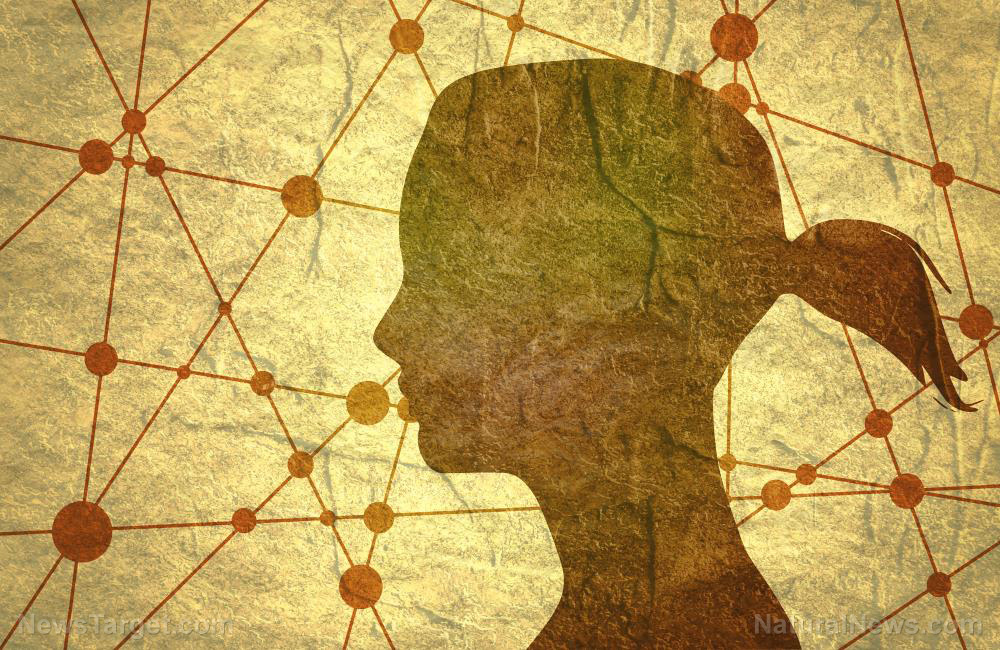Researchers identify depression biomarkers using TCM
12/17/2019 / By Evangelyn Rodriguez

Major depressive disorder (MDD) is a serious mental illness that has diverse causes and clinical manifestations. According to statistics, MDD affects up to 20 percent of the world’s population. Although numerous pharmacological and non-pharmacological treatments have been developed for MDD, treatment outcomes are still unsatisfactory. Researchers, therefore, are currently in search of new ways to classify MDD and understand its pathological heterogeneity.
In a recent study published in the journal Chinese Medicine, researchers from Hong Kong and China investigated brain connectomic associations with traditional Chinese medicine (TCM) subtypes of MDD. They found that two subtypes based on TCM diagnosis, namely liver qi stagnation (LQS) and heart and spleen deficiency (HSD), correspond to different brain connectivity patterns and that insular connectivity can be used as a biomarker for the TCM-based classification of MDD.
How TCM diagnoses depressive disorders
Diagnosis in TCM usually involves several methods, such as inspection, auscultation (listening to the sounds made by the body), olfaction or smelling, interrogation, and palpation. TCM practitioners usually employ these methods to collect information about signs and symptoms and to ultimately determine the cause of a health problem.
TCM classifies depressive disorders into six different patterns. Among them, the LQS and HSD subtypes are said to be the most common, occurring in 67 percent of all depression cases. According to studies, the LQS subtype is often comorbid with nervousness and irritability, while the HSD subtype is associated with excessive pensiveness, suspicion, and timidity. (Related: Acupuncture found to relieve depression symptoms at the molecular and behavioral levels.)
TCM subtypes of MDD and associated brain connectivity patterns
In their previous study, the researchers showed the different metabolomic profiles of LQS and HSD. They reported that both subtypes are linked to aberrant branch-chained amino acid (BCAA) and energy metabolism. In particular, LQS is associated with abnormalities in the production of monoamine and amino acid neurotransmitters like phenylalanine and N-acetyl-L-aspartic acid. LQS is also linked to stress-related pathophysiology. Inspired by these findings, the researchers decided to continue their investigation.
In the present study, they examined brain connectomic associations with LQS and HSD. They recruited 44 medication-free patients with recurring depressive episodes and classified them into either of the two TCM subtypes. They reported that 26 of the patients belonged to LQS, while 18 were classified under HSD. They recruited 28 healthy subjects to serve as controls.
The researchers analyzed the patients’ and the controls’ whole brain white matter connectivity using diffusion tensor imaging. They found that, compared with the other two groups, the LQS subtype showed significant differences in multiple network metrics of the angular gyrus, middle occipital gyrus, calcarine sulcus, and Heschl’s gyrus. These parts of the brain are associated with language and spatial cognition, mental navigation, vision, and learning and perception of speech-related cues, respectively.
Meanwhile, the HSD subtype had markedly greater regional connectivity of the insula, parahippocampal gyrus, and posterior cingulate gyrus than the other two groups. The insula is important for self-awareness, cognition, and perception, while the parahippocampal gyrus is involved in memory encoding and retrieval. The posterior cingulate gyrus is described as a highly connected part of the brain, but its cognitive function is unclear.
In addition, the HSD subtype also showed microstructural abnormalities of the frontal medial orbital gyrus and the middle temporal pole, which are paralimbic regions associated with emotions and basic cognitive processes.
The researchers concluded that the LQS subtype has aberrant connectivity of the audiovisual perception-related temporal-occipital network, while the HSD subtype has hyperconnectivity and microstructural abnormalities of the limbic-paralimbic network. Based on these findings, they further concluded that insular connectivity can be used as a biomarker for TCM-based classification of depression.
Sources include:
Tagged Under: beatdepression, brain connectomic associations, brain function, brain health, depression symptoms, heart and spleen deficiency, liver qi stagnation, major depressive disorder, MDD, mental health, research, science, TCM, traditional Chinese medicine
RECENT NEWS & ARTICLES
COPYRIGHT © 2017 DEPRESSIONSYMPTOMS.NEWS
All content posted on this site is protected under Free Speech. DepressionSymptoms.news is not responsible for content written by contributing authors. The information on this site is provided for educational and entertainment purposes only. It is not intended as a substitute for professional advice of any kind. DepressionSymptoms.news assumes no responsibility for the use or misuse of this material. All trademarks, registered trademarks and service marks mentioned on this site are the property of their respective owners.



















